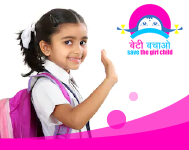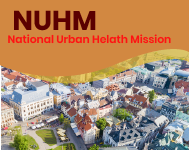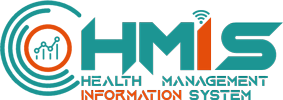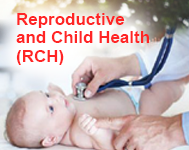-
IEC Materials
- BOOKLET RKSK An Over view UP_14 June_opt
- KSM BROUCHER 14 JUNE_opt
- KSM STANDEE 14 JUNE_opt
- AFHCs OUT REACH ACTIVITY CALENDER
- AFHS CARD
- ANEMIA BOOKLET
- BlUE WIFS REGISTER 2022
- LEAFLE- 3 RTI STI
- LEAFLE-2 NUTRITION
- LEAFLE-4 MENTAL HEALTH & DRUGS
- LEAFLE-5 RIGHT MARRIAGE AGE
- LEAFLE -1 MHM
- Leafle 6 NCD
- PINK WIFS REGISTER 2022
- POSTER-1 WIFS
- POSTER-RKSK 2 NUTRITION
- POSTER-RKSK 3 MHM
- POSTER -2 AFHS CHARTER
- POSTER -3 ANEMIA
- POSTER -RKSK 1 AGE OF MARRIAGE
- POSTER -RKSK 4 SRH
- POSTER -RKSK 5 DRUG ABUSE
- POSTER -RKSK 6 MENTAL HEALTH
- RKSK-NHE MODULE 2022
- WIFS CARD PROTOTYPE
- WIFS TRAINING MODULE 2022
Adolescents (10-19 years) constitute about one-fifth of India's population. This represents a huge opportunity that can transform the social and economic fortunes of the country. The large and increasing relative share and absolute numbers of adolescent in India make it necessary that the nation ensures they become a vibrant, constructive force that can contribute to sustainable and inclusive growth. In order to enable adolescents fulfil their potential, substantial investments must be made in education, health, development and other areas. Investments in adolescents will have an immediate, direct and positive impact on India's health goals. The Strategy aims at instituting an effective, appropriate, acceptable and accessible service package, addressing a range of adolescent health and developmental needs.
| 7Cs | Six strategic |
|---|---|
To implement this paradigm shift, the strategy identifies seven critical components (7Cs) that need to be ensured across all programme areas. These components are:
|
The six strategic priorities (programme) areas that have emerged from a situational analysis of adolescent health and development needs in India are:
|
The Ministry of Health and Family Welfare has launched a new adolescent health programme- Rashtriya Kishor Swasthya Karyakram. The programme envisages strengthening of the health system for effective communication, capacity building and monitoring and evaluation. Further, RKSK underscores the need for several constituencies to converge effectively and harness their collective strength to respond to adolescent health and development needs. The different stakeholders, working on issues related to adolescent health and development, have a lot to gain by building on each other's work both in terms of achieving programme objectives as well as in the improved indicators for adolescent health and development.
The new adolescent health (AH) strategy focuses on age groups 10-14 years and 15-19 years with universal coverage i.e. males and females; urban and rural; in school and out of school; married and unmarried and vulnerable and under-served.
The new AH strategy seeks to achieve the following objectives
-
Improve nutrition
- Reduce the prevalence of malnutrition among adolescent girls and boys (including overweight/obesity)
- Reduce the prevalence of iron-deficiency anaemia (IDA) among adolescent girls and boys
-
Enable sexual and reproductive health
- Improve knowledge, attitudes and behaviour, in relation to SRH
- Reduce teenage pregnancies
- Improve birth preparedness, complication readiness and provide early parenting support for adolescent parents
-
Enhance mental health
- Address mental health concerns of adolescents
-
Prevent injuries and violence
- Promote favourable attitudes for preventing injuries and violence (including GBV) among adolescents
-
Prevent substance misuse
- Increase adolescents' awareness of the adverse effects and consequences of substance misuse
-
Address conditions for NCDs
- Promote behaviour change in adolescents to prevent NCDs such as cancer, diabetes, cardio-vascular diseases and strokes The strategy is operationalised through six key components i.e. Communication (including Social and Behaviour Change Communication for improved health seeking behaviour); provision of commodities; provision of services; capacity building; monitoring & evaluation and programme management including supportive supervision.
Strategies/interventions to achieve objectives can be broadly grouped as
-
A. Community based interventions
- Peer Education (PE)
- Quarterly Adolescent Health Day (AHD)
- Weekly Iron and Folic Acid Supplementation Programme (WIFS)
- Menstrual Hygiene Scheme (MHS)
-
B. Facility based interventions
- Strengthening of Adolescent Friendly Health Clinics (AFHC)
-
C. Convergence
- within Health & Family Welfare - FP, MH (include VHND), RBSK, NACP, National Tobacco Control Programme National Mental Health Programme, NCDs and IEC
- with other departments/schemes - WCD (ICDS, KSY, BSY, SABLA), HRD (AEP, MDM), Youth Affairs and Sports (Adolescent Empowerment Scheme, National Service Scheme, NYKS, NPYAD)
-
D. Social and Behaviour Change Communication with focus on Inter Personal Communication Each strategy/intervention typically addresses more than one objectives.
AHFCs would provide a combination of commodities, IEC and curative services at PHC, CHC and DH levels plus outreach and referral services
-
Commodities
- Weekly Iron & Folic Acid Supplementation & Albendezole
- Sanitary napkins
- Contraceptives
- Medicines
-
Information (IEC & IPC)
- Counselling on nutrition, menstrual disorders, personal hygiene, menstrual hygiene, use of sanitary napkins, use of contraceptives, sexual concerns, depression, sexual abuse, gender violence, substance misuse and promoting healthy behavior to prevent non communicable diseases
- Posters/booklets/pamphlets, wall writing and visuals
-
Curative Services
- Treatment of severe malnutrition
- Treatment of common RTI/STI problems
- Treatment of menstrual disorders
- Treatment for sexual concerns of males and female
- Mental health service/management of depression
- Treatment of non communicable diseases and other common ailments
- Management of injuries related to accidents and violence
- Management of sexual abuse among girls
- Management of substance misuse
- Treatment of non-communicable diseases like hypertension, stroke, cardio-vascular diseases and diabetes
-
Adolescent Helpline: 18001801900
Contact for any queries regarding RKSK
- General Manager (RBSK/RKSK) SPMU-NHM, Uttar Pradesh,
- Email ID: gmbsgy@gmail.com
-
Nodal Officer (RBSK/RKSK), Directorate Family Welfare, Uttar Pradesh,
Email ID: jdtraining@rediffmail.com
-
Resource Materials under RKSK:
Government Orders (GOs)
-
Guidelines
-
Guidelines (AFHC)
- 1-AFHS Financial guideline 05-10-2015
- 1-AFHS Counsellors Honoraria (July to September 2015) 20.08.2015
- 1-AFHS Counsellors Honoraria (April to June 2015) 13.07.2015
- AFHS Counsellors selection 1st Phase 08.03.2013 (by DGFW)
- AFHS counselors selection guideline for 2nd Phase 26.05.2014 (by DGFW)
- AFHC-Financial Guidelines 2014-15 (16.12.2014)
- AFHC Register and Reporting Format
- IEC/BCC for AFHC:
-
Guidelines (NIPI-WIFS)
- PE Financial guielines 2016-17 (27.07.2016)
- 1a-WIFS Financial guideline 05-10-2015
- WIFS-Emergency Response System Guidelines-18-09-2014
- NIPI-WIFS-Implementation Guidelines and Format 04.02.2015
- 1-NDD Financial Guideline for Albendazole 31.12.2015
- 2-NDD Financial Guideline for IEC 22-01-2016
- 3-NDD Details Guidelines for implementation 28.01.2016
-
Peer Education
-
NDD September 2016
- ASHA Handout (Leaflet)Hindi
- Aanganwadi Handout_Hindi
- Poster Date School Hindi
- Community Handbill_Crisp_Hindi
- BANNER
- Community Handbill_Detailed_Hindi
- Flipchart School_Hindi
- DCCM_Presentation-Hindi
- Hindi District Training ppt
- Printing Guidelines for August NDD Training and IEC Material - NHM
- Handout School_Hindi
- Poster Positive Hindi 13
- Wall Art Hindi
- Mini Checklist_hindi-f
- Filpchart Anganwadi_Hindi






